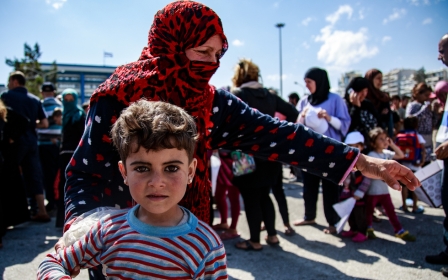Syrian currency at lowest value since start of war, economist says

Syria's currency hit its lowest value since the start of the country's five-year conflict on Sunday, having depreciated more than 92 percent, an economist said.
"It's the first time the exchange rate against the US dollar has reached this level since the beginning of the conflict," Firas Haddad said.
The black market exchange rate was 625 pounds to the dollar on Sunday compared with 48 pounds a dollar in March 2011, he said.
Sunday's official exchange rate was 512 Syrian pounds to the dollar, according to the central bank in Damascus.
In early April, the black market was 500 Syrian pounds to the dollar and the official rate was 462.
"Black market speculation unfortunately sets the exchange rate" and central bank meetings have failed to provide a mechanism to regulate it, Haddad said.
The currency’s latest depreciation coincided with the beginning of "military operations" in the northern battleground city of Aleppo last month, he said.
At least 300 civilians including women and children were reported killed in the divided city from 22 April before a fragile truce took hold there on Thursday.
As well as devastating the economy, the conflict has killed more than 270,000 people and displaced millions.
When the uprising against President Bashar al-Assad's government began in 2011, the head of the central bank said Syria had reserves of some $18bn, but experts say much of that has been used.
The World Bank said last month that these reserves had dropped to $700mn by the end of last year.
It said the "severe decline in oil receipts since the second half of 2012 and disruptions of trade due to the conflict" had put pressure on the exchange rate.
Falling export revenues and declining reserves had caused the currency's "significant depreciation," it added.
Syria's economy has contracted by more than 50 percent in real terms since 2011, with the biggest losses in output coming in the energy and manufacturing sectors, according to EconomicCalendar.com. State-run oil production has fallen to 10,000 barrels per day from nearly 400,000, and inflation has averaged 51 percent.
The Assad government has benefited from oil supplies and credit from Iran, Syria’s regional ally and military supporter.
A reporter in Aleppo city's rebel-held east on Sunday said the cost of living had increased since the freeze in fighting there took hold on Thursday.
The price of a kilo of tomatoes had risen to 300 from 200 Syrian pounds in three days, and the cost of a litre of fuel rose to 450 from 400 Syrian pounds.
Middle East Eye propose une couverture et une analyse indépendantes et incomparables du Moyen-Orient, de l’Afrique du Nord et d’autres régions du monde. Pour en savoir plus sur la reprise de ce contenu et les frais qui s’appliquent, veuillez remplir ce formulaire [en anglais]. Pour en savoir plus sur MEE, cliquez ici [en anglais].




